Traveling within the World
Linking your favorite traveling artists across the globe
History of things then to now
Because of the unusual size of the outbreak of witchcraft accusations, various aspects of the historical context of this episode have been considered as specific contributing factors.
Political context
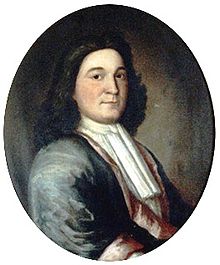
The original 1629 Royal Charter of Massachusetts was canceled in 1684, when King James II installed Sir Edmund Andros as the Governor of the Dominion of New England. Andros was ousted in 1689 when King James II was dethroned in the "Glorious Revolution", and William and Mary ascended to the throne in England. Simon Bradstreet and Thomas Danforth were elected Governor and Lieutenant Governor. At this same time, tensions erupted between the English colonists settling in "the Eastward" (the present-day coast of Maine) and the French-supported Wabanaki Indians of the region, in what would come to be known as King William's War, following only 13 years on the heels of the devastating King Philip's War with the Wampanoag and other indigenous tribes in southern and western New England. In October 1690, William Phips led an unsuccessful attack on Quebec, and many English settlements along the coast continued to be attacked by Indians, including particularly the Candlemas Massacre, an assault on York on January 25, 1692. A new charter for the Province of Massachusetts had not been given final approval in England until October 16, 1691. News of the appointment of Phips as the new governor reached Boston in late Januaryand a copy of the new charter arrived in Boston on February 8, 1692. Phips was formally voted governor on Election Day, May 4, 1692. Phips arrived in Boston ten days later, on May 14. On May 16, Phips was sworn in as Governor and William Stoughton as Deputy Governor One of the first orders of business for the new Governor and Council on May 27, 1692, was the formal nomination of county justices of the peace, sheriffs, and the commission of a Special Court of Oyer and Terminer to handle the large numbers of people who were "thronging" the jails.
Boyer and Nissenbaum have postulated that without a valid charter, there was no legitimate form of government to try capital cases until Phips arrived with the new charter, but this has been disputed by David Konig, who points out that between charters, according to the Records of the Court of Assistants, a group of 14 pirates were tried and condemned on January 27, 1690 for acts of piracy and murder in August and October 1689.
Local context

In 1689, Salem Village was finally allowed by the church in Salem Town to form their own separate covenanted church congregation and ordain their own minister, after many petitions to do so. Salem Village was torn by internal disputes between neighbors who disagreed about the choice of Samuel Parris as their first ordained minister, and about the choice to grant him the deed to the parsonage as part of his compensation.
Economic context
Increasing family size fueled disputes over land between neighbors and within families, especially on the frontier where the economy was based on farming. Changes in the weather or blights could easily wipe out a year's crop. A farm that could support an average-sized family could not support the many families of the next generation, prompting farmers to push farther into the wilderness to find land, encroaching upon the indigenous people. Due to the strongly religious nature of the Puritans, religious fervor added tension to the mix. Loss of crops, livestock, and children, as well as earthquakes and bad weather, were typically attributed to the wrath of God.
Religious context
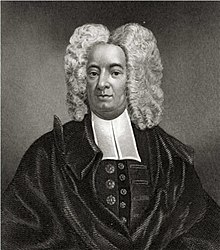
"The Puritans" were an activist movement within the Church of England, that began in the mid-16th century. The Puritans opposed many of the traditions of the Church of England, including the Book of Common Prayer, certain ceremonial rituals especially the use of priestly vestments (cap and gown) during services, the use of the Holy Cross during baptism and kneeling during the sacrament. In England, the Puritan party was not merely a religious one, but was also a very actively political one, and their reasons for leaving England were often political in nature, rather than merely idealogical religiously.
The colony of Massachusetts at the time was almost entirely Puritan in thought, but was not a theocracy. A few Protestants (such as Roger Williams) prior to this period had contended that this level of religious involvement in the State was contrary to the pure teachings of the New Testament, in which the church was separate from the state (Mt. 22:21; 1Cor. 5:12, 13 1 Pet. 2:13, 14), and unrepentant sinful behavior that merited serious spiritual discipline was administered by supernatural means (Acts 5:1–10; 1 Cor. 5:1–4; 1 Tim. 1:20).
In his book Memorable Providences Relating to Witchcrafts and Possessions (1689), Cotton Mather describes strange behavior exhibited by the four children of Boston mason John Goodwin and attributed it to witchcraft practiced upon them by an Irish washerwoman, Mary Glover. Mather, a minister of Boston's North Church (not to be confused with the Episcopal Old North Church of Paul Revere fame), was a prolific publisher of pamphlets and a firm believer in witchcraft.
Social context
The patriarchal beliefs that Puritans held in the community added stresses. They believed women should be subservient to men, and that women were more likely to enlist in the Devil's service because women were lustful by nature. The "small-town atmosphere" made secrets difficult to keep, and people's opinions about their neighbors were generally accepted as fact. In an age where the philosophy "children should be seen and not heard" was taken at face value, children were at the bottom of the social ladder. Toys and games were seen as idle and playing was discouraged. Girls had additional restrictions placed upon them and were trained from a young age to spin yarn, cook, sew, weave, serve their husbands and bear their children.
In accordance with Puritan beliefs, the majority of accused 'witches' were unmarried or recently widowed land-owning women; according to the law if no legal heir existed upon the owner's death, title to the land would revert to the previous owner, or (if no previous owner could be determined) to the colony. This made witch-hunting a possible method of acquiring a profitable piece of property.
The events
Because of the number of cases involved, timelines are very helpful to clarifying the unfolding of the specifics of this event. Most start with the afflictions of the girls in the Parris household in January/February 1692 and end in May 1693 with the last trials, but some start earlier to place the trials in a wider context of other witch-hunts, and some end later to include information about restitution.
The initial events
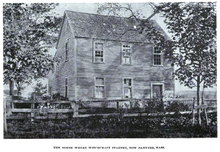
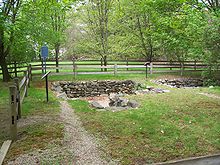
In Salem Village in 1692, Betty Parris, age 9, and her cousin Abigail Williams, age 11, the daughter and niece (respectively) of the Reverend Samuel Parris, began to have fits described as "beyond the power of Epileptic Fits or natural disease to effect" by John Hale, minister in nearby Beverly.The girls screamed, threw things about the room, uttered strange sounds, crawled under furniture, and contorted themselves into peculiar positions, according to the eyewitness account of Rev. Deodat Lawson, a former minister in the town. The girls complained of being pinched and pricked with pins. A doctor, historically assumed to be William Griggs, could find no physical evidence of any ailment. Other young women in the village began to exhibit similar behaviors. When Lawson preached in the Salem Village meetinghouse, he was interrupted several times by outbursts of the afflicted.
The first three people accused and arrested for allegedly afflicting Betty Parris, Abigail Williams, 12-year-old Ann Putnam, Jr., and Elizabeth Hubbard were Sarah Good, Sarah Osborne, and Tituba Sarah Good was homeless and known to beg for food or shelter from neighbors. Sarah Osborne had sex with her indentured servant and rarely attended church meetings. Tituba, as a slave of a different ethnicity than the Puritans, was an obvious target for accusations. All of these outcast women fit the description of the "usual suspects" for witchcraft accusations, and no one stood up for them. These women were brought before the local magistrates on the complaint of witchcraft and interrogated for several days, starting on March 1, 1692, then sent to jail (Boyer 3).
Other accusations followed in March: Martha Corey, Dorothy Good (mistakenly called Dorcas Good in her arrest warrant) and Rebecca Nurse in Salem Village, and Rachel Clinton in nearby Ipswich. Martha Corey had voiced skepticism about the credibility of the girls' accusations, drawing attention to herself. The charges against her and Rebecca Nurse deeply troubled the community because Martha Corey was a full covenanted member of the Church in Salem Village, as was Rebecca Nurse in the Church in Salem Town. If such upstanding people could be witches, then anybody could be a witch, and church membership was no protection from accusation. Dorothy Good, the daughter of Sarah Good, was only 4 years old, and when questioned by the magistrates her answers were construed as a confession, implicating her mother. In Ipswich, Rachel Clinton was arrested for witchcraft at the end of March on charges unrelated to the afflictions of the girls in Salem Village.
Accusations and examinations before local magistrates

In April, the stakes rose. When Sarah Cloyce (Nurse's sister) and Elizabeth (Bassett) Proctor were arrested, they were brought before John Hathorne and Jonathan Corwin, not only in their capacity as local magistrates, but as members of the Governor's Council, at a meeting in Salem Town. Present for the examination were Deputy Governor Thomas Danforth, and Assistants Samuel Sewall, Samuel Appleton, James Russell, and Isaac Addington. Objections by John Proctor during the proceedings resulted in his arrest that day as well.
Within a week, Giles Corey (Martha's husband, and a covenanted church member in Salem Town), Abigail Hobbs, Bridget Bishop, Mary Warren (a servant in the Proctor household and sometime accuser herself), and Deliverance Hobbs (stepmother of Abigail Hobbs) were arrested and examined. Abigail Hobbs, Mary Warren, and Deliverance Hobbs all confessed and began naming additional people as accomplices. More arrests followed: Sarah Wildes, William Hobbs (husband of Deliverance and father of Abigail), Nehemiah Abbott Jr., Mary Eastey (sister of Cloyce and Nurse), Edward Bishop, Jr. and his wife Sarah Bishop, and Mary English, and finally on April 30, the Reverend George Burroughs, Lydia Dustin, Susannah Martin, Dorcas Hoar, Sarah Morey, and Philip English (Mary's husband). Nehemiah Abbott Jr. was released because the accusers agreed he was not the person whose specter had afflicted them. Mary Eastey was released for a few days after her initial arrest because the accusers failed to confirm that it was she who had afflicted them, and then she was rearrested when the accusers reconsidered.
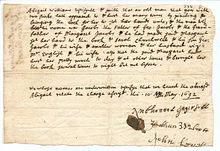
In May, accusations continued to pour in, but some of those named began to evade apprehension. Multiple warrants were issued before John Willard and Elizabeth Colson were apprehended, but George Jacobs Jr. and Daniel Andrews were not caught. Until this point, all the proceedings were still only investigative, but on May 27, 1692, William Phips ordered the establishment of a Special Court of Oyer and Terminer for Suffolk, Essex, and Middlesex counties to prosecute the cases of those in jail. Warrants were issued for even more people. Sarah Osborne, one of the first three accused, died in jail on May 10, 1692.
Warrants were issued for 36 more people, with examinations continuing to take place in Salem Village: Sarah Dustin (daughter of Lydia Dustin), Ann Sears, Bethiah Carter Sr. and her daughter Bethiah Carter Jr., George Jacobs, Sr. and his granddaughter Margaret Jacobs, John Willard, Alice Parker, Ann Pudeator, Abigail Soames, George Jacobs, Jr. (son of George Jacobs, Sr. and father of Margaret Jacobs), Daniel Andrew, Rebecca Jacobs (wife of George Jacobs, Jr. and sister of Daniel Andrew), Sarah Buckley and her daughter Mary Witheridge, Elizabeth Colson, Elizabeth Hart, Thomas Farrar, Sr., Roger Toothaker, Sarah Proctor (daughter of John and Elizabeth Proctor), Sarah Bassett (sister-in-law of Elizabeth Proctor), Susannah Roots, Mary DeRich (another sister-in-law of Elizabeth Proctor), Sarah Pease, Elizabeth Cary, Martha Carrier, Elizabeth Fosdick, Wilmot Redd, Sarah Rice, Elizabeth Howe, Capt. John Alden (son of John Alden and Priscilla Mullins of Plymouth Colony), William Proctor (son of John and Elizabeth Proctor), John Flood, Mary Toothaker (wife of Roger Toothaker and sister of Martha Carrier) and her daughter Margaret Toothaker, and Arthur Abbott. When the Court of Oyer and Terminer convened at the end of May, this brought the total number of people in custody for the court to handle to 62.
Cotton Mather wrote to one of the judges, John Richards, on May 31, 1692, voicing his support of the prosecutions, but cautioning him of the dangers of relying on spectral evidence and advising the court on how to proceed.
Formal prosecution: The Court of Oyer and Terminer

The Court of Oyer and Terminer convened in Salem Town on June 2, 1692, with William Stoughton, the new Lieutenant Governor, as Chief Magistrate, Thomas Newton as the Crown's Attorney prosecuting the cases, and Stephen Sewall as clerk. Bridget Bishop's case was the first brought to the grand jury, who endorsed all the indictments against her. She went to trial the same day and was found guilty. On June 3, the grand jury endorsed indictments against Rebecca Nurse and John Willard, but it is not clear why they did not go to trial immediately as well. Bridget Bishop was executed by hanging on June 10, 1692.
In June, more people were accused, arrested and examined, but now in Salem Town, by former local magistrates John Hathorne, Jonathan Corwin, and Bartholomew Gedney who had become judges of the Court of Oyer and Terminer. Roger Toothaker died in prison on June 16, 1692.
At the end of June and beginning of July, grand juries endorsed indictments against Sarah Good, Elizabeth Howe, Susannah Martin, Elizabeth Proctor, John Proctor, Martha Carrier, Sarah Wilds, and Dorcas Hoar. Only Sarah Good, Elizabeth Howe, Susannah Martin and Sarah Wildes, along with Rebecca Nurse, went on to trial at this time, where they were found guilty, and executed on July 19, 1692. In mid-July as well, the primary source of accusations moved from Salem Village to Andover, when the constable there asked to have some of the afflicted girls in Salem Village visit with his wife to try to determine who caused her afflictions. Ann Foster, her daughter Mary Lacey Sr., and granddaughter Mary Lacey Jr. all confessed to being witches. Anthony Checkley was appointed by Governor Phips to replace Thomas Newton as the Crown's Attorney when Newton took an appointment in New Hampshire.
In the beginning of August, grand juries indicted George Burroughs, Mary Eastey, Martha Corey, and George Jacobs, Sr., and trial juries convicted Martha Carrier, George Jacobs, Sr., George Burroughs, John Willard, Elizabeth Proctor, and John Proctor. Elizabeth Proctor was given a temporary stay of execution because she was pregnant. Before being executed, George Burroughs recited the Lord's Prayer perfectly, supposedly something that was impossible for a witch, but Cotton Mather was present and reminded the crowd that the man had been convicted before a jury. On August 19, 1692, Martha Carrier, George Jacobs Sr., George Burroughs, John Willard, and John Proctor were hanged.
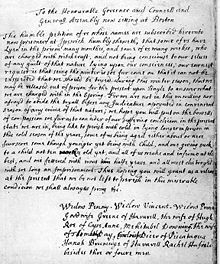
In September, grand juries indicted eighteen more people. The grand jury failed to indict William Proctor, who was re-arrested on new charges. On September 19, 1692, Giles Corey refused to plead at arraignment, and was subjected to peine forte et dure, a form of torture in which the subject is pressed beneath an increasingly heavy load of stones, in an attempt to make him enter a plea. Four pleaded guilty and eleven others were tried and found guilty. On September 22, 1692, eight of those convicted were hanged, reportedly called the "Eight firebrands of Hell" by Salem minister Nicholas Noyes. One of the convicted, Dorcas Hoar, was given a temporary reprieve, with the support of several ministers, to make her confession before God. Aged Mary Bradbury escaped. Abigail Faulkner Sr. was pregnant and given a temporary reprieve (some reports from that era say that Abigail's reprieve later became a stay of charges, when the courts realized that sentencing Abigail to death would also kill her unborn child, which had committed no crime).
Mather was asked by Governor Phips in September to write about the trials, and obtained access to the official records of the Salem trials from his friend Stephen Sewall, clerk of the court, upon which his account of the affair, Wonders of the Invisible World, was based.
This court was dismissed in October by Governor Phips, although this was not the end of the trials.
Tags:
Replies to This Discussion
Events
-
2014 is the Chinese Year of the Horse
February 17, 2026 at 12am to February 5, 2027 at 12am – where & how you choose
Birthdays
Birthdays Today
Important (read & understand)
Skype: Travelingraggyman
Email and Instant Messenger:
TravelerinBDFSM @ aol/aim; hotmail; identi.ca; live & yahoo
OR
Travelingraggyman @ gmail and icq ***

1AWARD UPDATES & INFORMATION
10,000 votes - Platinum Award
5,000 votes - Gold Award
2,500 votes - Silver Award
1,000 votes - Bronze Award
300 votes - Pewter Award
100 votes - Copper Award
Member of the Associated Posting System {APS}
This allows members on various sites to share information between sites and by providing a by line with the original source it credits the author with the creation.
Legal Disclaimer
***************We here at Traveling within the World are not responsible for anything posted by individual members. While the actions of one member do not reflect the intentions of the entire social network or the Network Creator, we do ask that you use good judgment when posting. If something is considered to be inappropriate it will be removed
Site Meter
This site is strictly an artist operational fan publication, no copyright infringement intended
Patchwork Merchant Mercenaries had its humble beginnings as an idea of a few artisans and craftsmen who enjoy performing with live steel fighting. As well as a patchwork quilt tent canvas. Most had prior military experience hence the name.
Patchwork Merchant Mercenaries.
Vendertainers that brought many things to a show and are know for helping out where ever they can.
As well as being a place where the older hand made items could be found made by them and enjoyed by all.
We expanded over the years to become well known at what we do. Now we represent over 100 artisans and craftsman that are well known in their venues and some just starting out. Some of their works have been premiered in TV, stage and movies on a regular basis.
Specializing in Medieval, Goth , Stage Film, BDFSM and Practitioner.
Patchwork Merchant Mercenaries a Dept of, Ask For IT was started by artists and former military veterans, and sword fighters, representing over 100 artisans, one who made his living traveling from fair to festival vending medieval wares. The majority of his customers are re-enactors, SCAdians and the like, looking to build their kit with period clothing, feast gear, adornments, etc.
Likewise, it is typical for these history-lovers to peruse the tent (aka mobile store front) and, upon finding something that pleases the eye, ask "Is this period?"
A deceitful query!! This is not a yes or no question. One must have a damn good understanding of European history (at least) from the fall of Rome to the mid-1600's to properly answer. Taking into account, also, the culture in which the querent is dressed is vitally important. You see, though it may be well within medieval period, it would be strange to see a Viking wearing a Caftan...or is it?
After a festival's time of answering weighty questions such as these, I'd sleep like a log! Only a mad man could possibly remember the place and time for each piece of kitchen ware, weaponry, cloth, and chain within a span of 1,000 years!! Surely there must be an easier way, a place where he could post all this knowledge...
Traveling Within The World is meant to be such a place. A place for all of these artists to keep in touch and directly interact with their fellow geeks and re-enactment hobbyists, their clientele.
© 2024 Created by Rev. Allen M. Drago ~ Traveler.
Powered by
![]()